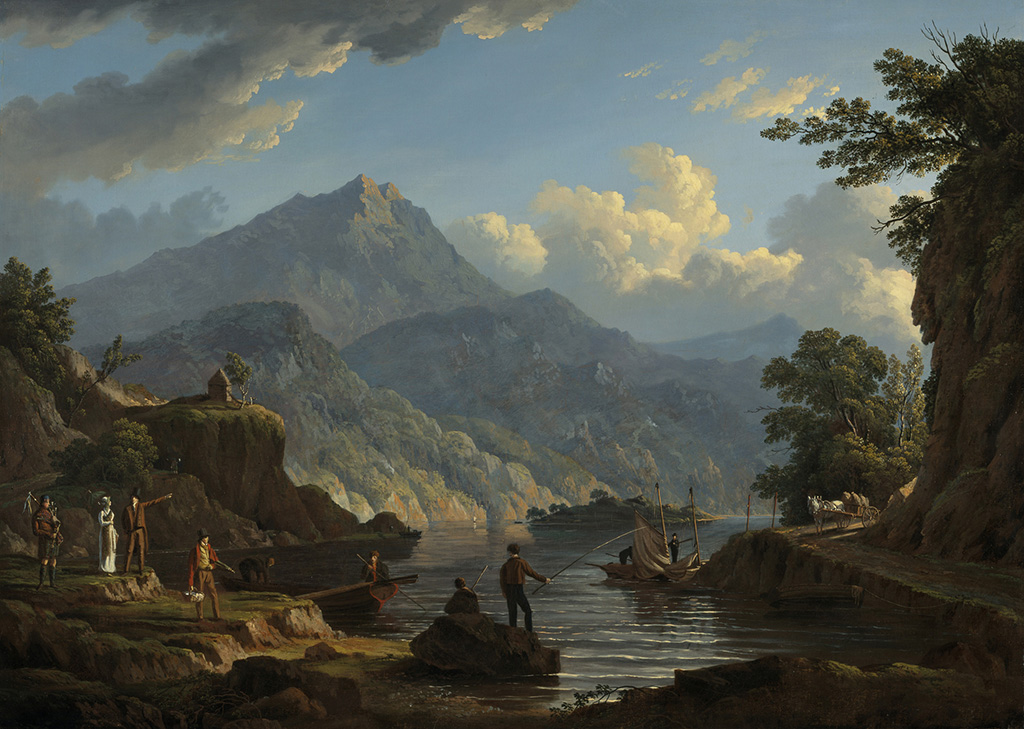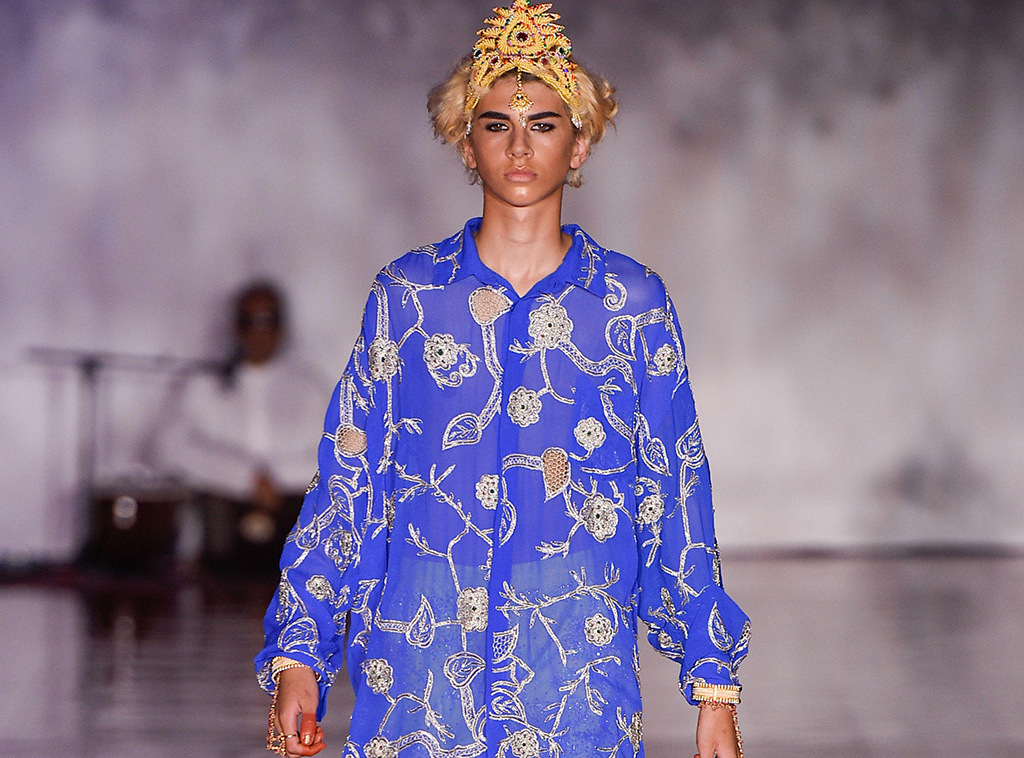A huge year lies ahead for National Museums Scotland.
The completion of the transformation of the National Museum of Scotland’s iconic Victorian building in Edinburgh and a diverse and world-class programme of exhibitions means a fascinating world of discovery is ready.
The 2019 programme will feature the unveiling of three new permanent galleries at the National Museum plus major exhibitions taking in 500 years of robotics, diversity in fashion, the fascinating world of parasites and the story of how highland traditions came to be adapted and established as enduring international symbols of Scottish identity as a whole.
The new permanent galleries will open on Friday 8 February 2019 at the National Museum of Scotland: Ancient Egypt Rediscovered, Exploring East Asia and the Art of Ceramics. This will mark the completion, on time and on budget, of the 15-year, £80 million transformation of the Museum, restoring the much-loved Victorian building, revealing more of its treasures and almost trebling visitor numbers.
Dr Gordon Rintoul, director of National Museums Scotland, said: ‘Thanks to the work over the last fifteen years to transform the National Museum of Scotland, it is now the most popular visitor attraction in the UK outwith London, with over 2.3 million visitors in the last calendar year.
‘Our programme for 2019 will build on that success, with the final new permanent galleries opening on 8 February and a tremendously diverse and engaging programme of special exhibitions throughout the year.’
The major summer exhibition, Wild and Majestic: Romantic Visions of Scotland (26 June to 10 November 2019) will explore how, in the era of the European Romantic movement of the 18th and 19th century, Scotland became the subject of international fascination.

John Knox’s painting ‘Landscape with Tourists at Loch Katrin’, oil on canvas, 1815 (Image: National Galleries of Scotland)
By the end of Queen Victoria’s reign, an adaptation of the cultural traditions of the highlands had become fixed as a representation of wider Scottish identity. The exhibition will show how this romanticised ideal of Scotland was not purely invention, as cultural traditions were preserved, idealised and reshaped to suit contemporary tastes against a background of political agendas, economic and social change from the end of the Jacobite challenges to the reign of Queen Victoria. Wild and Majestic: Romantic Visions of Scotland is supported by Baillie Gifford Investment Managers.
Through rich displays which incorporate significant items on loan from private and public sources, , the exhibition will present a complex and contested history through key moments such as the Ossian controversy, the foundation of Highland societies, the overturning of the ban on Highland dress, the pageantry around the 1822 royal visit to Scotland by King George IV, the Highland tourism boom, and the creation of a Romantic idyll for Queen Victoria at Balmoral.
Developed by the Science Museum, Robots (18 January to 5 May 2019) will explore 500 years of humanity’s quest to re-imagine ourselves as machines. This major exhibition will feature a unique collection of over 100 robots, from the earliest automata to those from science fiction and modern-day research labs.
Looking at five different time periods, the exhibition will consider the role of humanoid robots in religious belief, the Industrial Revolution, popular culture and visions of the future. Recent developments from robotics research will also be on display, examining why roboticists are building robots that resemble people and interact in human-like ways. Visitors will see some of the latest humanoid robots in action and find out more about what a shared future with robots might be like.
The challenges of re-creating human abilities – such as walking – in mechanical form will be examined, and there will be the opportunity to interact with some of the robots on display. Robots at the National Museum of Scotland is supported by players of People’s Postcode Lottery.

The fashion industry will be the focus of a new exhibition (Photo: Pixelformula/Sipa/Rex/Shutterstock)
Body Beautiful: Diversity on the Catwalk (23 May to 20 October 2019) will examine how, and to what extent, the fashion industry is championing alternative representations of beauty on the catwalk, in advertising and editorial, and behind the camera. The first exhibition of its kind, Body Beautiful will showcase work by designers embracing inclusivity and body positivity, exploring themes including size, gender and sexuality, age, race, and disability. Visitors will see pivotal fashions from established and emerging designers, and hear from other key influencers in the industry, from models and stylists, to photographers, editors and educators.
Parasites: Battle for Survival (6 December 2019 to 19 April 2020) will explore the fight to eradicate five neglected tropical diseases and the role of research taking place in Scotland to do this. Malaria, Guinea Worm, Sleeping Sickness, Schistosomiasis and Leishmaniasis are among those diseases described as neglected because they remain major epidemic diseases in many countries.
These five are among a range of diseases which World Health Organisation is aiming to eradicate, some as soon as 2020. Scottish institutions – the Wellcome Centre for Anti-Infectives Research at the University of Dundee, Wellcome Centre for Molecular Parasitology at the University of Glasgow and Edinburgh Centre for Immunity, Infection and Evolution, and Edinburgh infectious Diseases at the University of Edinburgh – are at the forefront of these efforts. Presented in partnership with these universities, this exhibition will explore the history of Scottish involvement in identifying and treating tropical disease and highlight the research currently taking place in Scotland
Continuing until 21 April 2019, Embroidered Stories: Scottish Samplers showcases an extraordinary collection of Scottish needlework from the 18th and 19th centuries. The 70 samplers in the exhibition are on loan from American collector Leslie B Durst, a philanthropist and passionate supporter of the arts who has assembled a remarkable collection of samplers from Europe and North America.
At the National War Museum in Edinburgh Castle, Conscience Matters (8 March 2019 to 23 February 2020) is the result of a major research project into conscientious objectors in Britain led by the University of Edinburgh. During the Second World War, over 60,000 people registered their objections to fighting in the Second World War on grounds of conscience. The exhibition reveals the stories of the men and women who chose not to fight for religious, political or moral reasons.
TAGS

